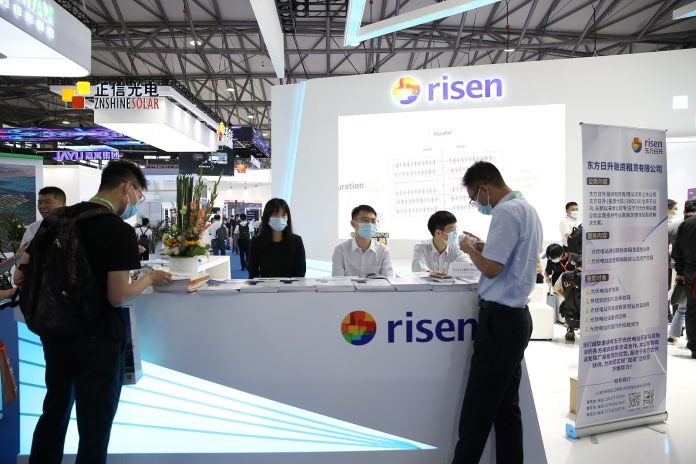Risen Energy has launched a range of new heterojunction (HJT) and building-integrated photovoltaic (BIPV) modules that are said to boast a reduction in carbon use and improved power generation performance compared with previous products.
The new HJT modules, called Hyper-ion, uses 210mm HJT half-cut 120 micron cells and microcrystalline technology to achieve efficiencies above 25.2%, Risen said.
Relying on advances in passivation technology, the product comes with an open voltage above 750mV and HJT thin cells with a carbon value nearly 30% lower than that of PERC, according to Risen. The carbon footprint is further reduced by a high-strength steel alloy frame.
Alongside the HJT launch, Risen has responded to new Chinese policies aimed at decarbonising the country’s construction sector and building stock by releasing two new BIPV modules: the Super Top, aimed at the commercial and industrial (C&I) segment, and the Super Tile, for residential rooftops.
Featuring a 210mm HJT cell, the 740W double-glass Super Top module exhibits no shading loss, according to Risen, which has developed a new assembly method for the steel plate and the module so that the modules can be fully integrated into the construction process.
The 1817mm x 420mm Super Tile, meanwhile, has a maximum power of 120W and comes in two formats: stacked and tile. Both the new C&I and residential offerings can be installed by one person.
Risen Energy said it plans to focus mainly on research into low-carbon products, including in BIPV, steel frame and HJT technologies, as at eyes additional launches.
The company earlier this year provided details of a RMB44.6 billion (US$7 billion) expansion plan to help the manufacturer establish a more vertically integrated manufacturing chain, assembling a comprehensive production plan from material, ingot, cell and module production.
Risen Energy launches new HJT, BIPV modules, touts carbon-reduction progress
Risen exhibiting at SNEC in 2021.
Source:PVTECH
ViaJules Scully






